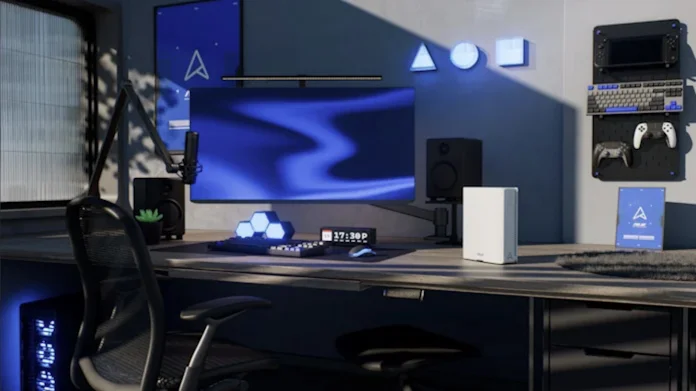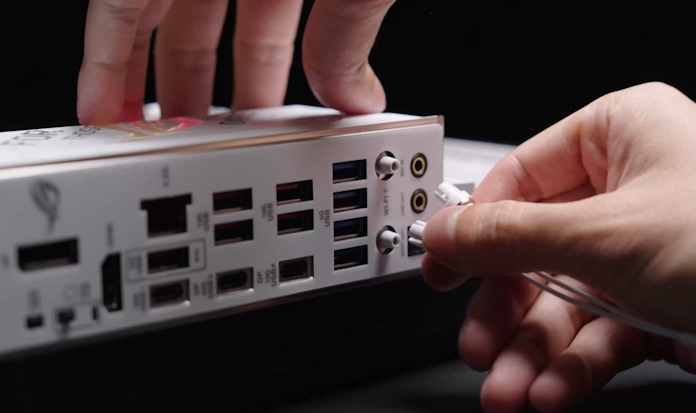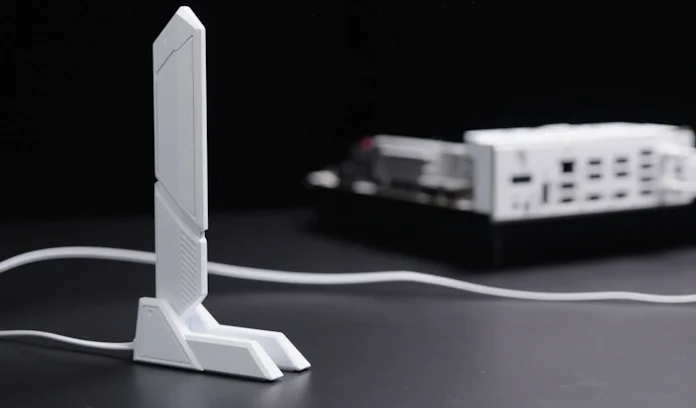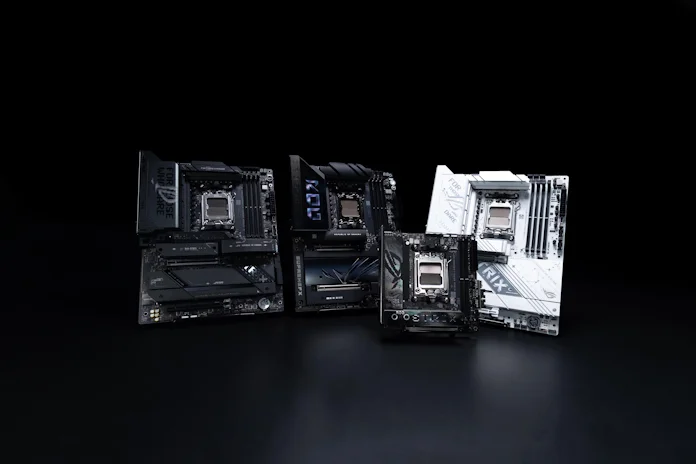WiFi 7 is a hot topic. Not only is it faster, but it’s also better at managing congested networks than the WiFi 5 routers that many people still have at home. WiFi 7 brings higher throughput and lower latency to gamers, remote workers, and tech enthusiasts. Given all the benefits the new standard has to offer, you might be upgrading to a WiFi 7 router or mesh WiFi system this year. To get the most out of the new networking hardware on your desktop PC, you’ll need a WiFi 7 motherboard. The X870E and X870 motherboard lineup has plenty of options.
Fully upgraded
WiFi 7 offers many advantages over previous generations of technology. First, it offers dramatically improved speeds. While WiFi 6 focused on congestion relief technologies designed for congested networks, WiFi 7 goes further by maintaining and improving on the benefits of WiFi 6 with new features that deliver faster wireless speeds than ever before.*

WiFi 7 boosts speeds with a variety of new technologies. While WiFi 6E gave you access to the 6GHz band, WiFi 7 does even more through ultra-wide 320MHz channels.** These wider channels and higher capacity allow WiFi 7 routers to deliver better performance and greater capacity. The 320MHz channel bandwidth in the 6GHz band delivers twice the data rate over WiFi 6E. Plus, 4096 Quadrature Amplitude Modulation (4K QAM) allows you to pack more data more densely into each signal.
Previously, wider channels were not practical because spectrum limitations meant parts of the band might not be usable. Multi-RU and puncturing allow WiFi 7 motherboards to take full advantage of the remaining parts of channels that are not used or interrupted. In this way, WiFi bandwidth can be used efficiently, making data transfers faster and more reliable.
Multi-link operation (MLO) allows devices to separate the data and control planes to transmit and/or receive simultaneously on different bands and channels. Parallel links allow for aggregated bandwidth for faster speeds and improved reliability of WiFi connections with multiple bands used simultaneously.
Connecting with ASUS WiFi Q-Antenna
To help you get the most out of your WiFi 7 connection, your X870E or X870 motherboard comes with an ASUS WiFi Q-Antenna. PCB circuit optimization and enhanced internal pin connectors deliver superior signal throughput on the 5GHz and 6GHz bands. The easy one-step design means you can just plug it in and get a great experience. And the connection itself is easier than the previous generation design, with EZ-Plug replacing the traditional cumbersome screw-in mechanism.

Because ASUS WiFi Q-Antennas are directional, the Armoury Crate app also provides handy tools to help you adjust their position to improve signal quality and range: Direction Finder detects signal strength and identifies the ideal position for the antenna in just a few steps, while Fast Check allows you to quickly check signal strength to ensure the best connection.

We’ve also introduced new Armoury Crate features to help you get the best connection for your PC: Traffic Monitor allows you to track the current usage of WiFi channels on the 2.4GHz, 5GHz and 6GHz bands, and if you’re using an ASUS router, Channel Switch allows you to switch to a less congested channel to improve network performance.
Choose your WiFi 7 power level
With the sole exception of the ASUS Prime X870-P, which is a motherboard without an onboard wireless module, all ASUS X870E and X870 boards support WiFi 7. If you’re looking for the absolute best wireless performance, we recommend the top-of-the-line ROG Crosshair X870E Hero. Offering link speeds of up to 6.5Gbps with access to MLO, 4K QAM, and 320MHz channels, this WiFi 7 motherboard delivers a premium wireless networking experience. The ProArt X870E-Creator WiFi and most ROG Strix X870E/X870 motherboards also feature the same high-end WiFi module.
If your wireless networking needs are less demanding, the ROG Strix X870-A Gaming WiFi, TUF Gaming X870-Plus WiFi, or ASUS Prime X870-P WiFi are a good choice. These motherboards feature many of the latest WiFi 7 advancements, even if they don’t offer the highest link speeds, giving you more networking options when choosing a platform for your AMD Ryzen 9000 series CPU, and they also offer significant speed improvements over previous generation options.
| series | Model | WiFi Module | modulation | Bandwidth | Link Speed with MLO | WiFi Q Antenna |
|---|---|---|---|---|---|---|
| ROG Crosshair | X870E Hero | MT7927 | 4096QAM | 320MHz | 6.5Gbps | yes |
| ROG Strix | X870E-E WiFi | MT7927 | 4096QAM | 320MHz | 6.5Gbps | yes |
| X870-F WiFi | MT7927 | 4096QAM | 320MHz | 6.5Gbps | yes | |
| X870-A WiFi | MT7925 | 4096QAM | 160MHz | 2.9Gbps | yes | |
| X870-I WiFi | MT7927 | 4096QAM | 320MHz | 6.5Gbps | yes | |
| Pro Art | X870E-Creator WiFi | MT7927 | 4096QAM | 320MHz | 6.5Gbps | yes |
| TUF Gaming | X870-Plus WiFi | MT7925 | 4096QAM | 160MHz | 2.9Gbps | yes |
| Prime | X870-P WiFi | MT7925 | 4096QAM | 160MHz | 2.9Gbps | yes |
| X870-P | none | N/A | N/A | N/A | no |
WiFi 7 Motherboards Are Waiting For You
With WiFi 7 routers and WiFi 7 motherboards, your next desktop PC can take advantage of all the next-generation benefits that new networking technologies have to offer. The X870E and X870 motherboard lineup gives you even more options for PCs built from the ground up for next-generation wireless networks. Support for WiFi 7 is just one of the many exciting new features these motherboards offer. Click here to learn more about the latest X870E and X870 motherboards.

*To use WiFi 7 features, your WiFi router and client devices must have a WiFi 7-compatible operating system to support the corresponding features.
**Support for 320MHz channels in the 6GHz band may not be available in some regions/countries due to regulatory restrictions. Not all WiFi 7 client modules support 320MHz channels.


